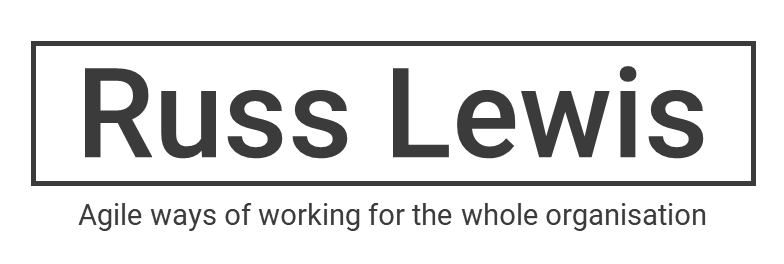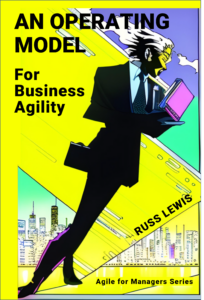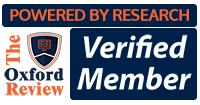Most ways of working still rely on functional hierarchy, where managers make decisions and workers do the work. Managers know they can't change this work structure, but they can transform its effectiveness without asking for permission and without needing a budget.
Before exploring the changes that transform the way people work, we need to recognise why hierarchy works and why successful digital-age organisations disregard it.
Hierarchy enables growth
For 150 years or so, growth and long-term profitability have been the purpose of many firms. Bankers such as JP Morgan financed industrial schemes that built railways and generated electricity. They also created corporations that relied on investment bankers, who needed the corporations to keep investing in growth.
The industrial model has been hugely successful and widely adopted. Leaders could predict what the market wanted in 2-3 years’ time, engineers would then design machines to make those products, workers were paid to operate the machines, marketing people to sell the products, and managers in each department made sure everything ran like clockwork.
Whilst R&D is separate from Production, having department Heads that make local decisions about resource allocation, both Heads would sit on the same leadership team. They heard information cascaded from the CEO, whom they were able to update on the status of their own departments. The heads of R&D and Production continue to serve as single points of control to the leadership team. When the firm opened a new office or bought another company, they only needed to add one more Head to that team to preserve control.
The online directory at J P Morgan Chase, reminds approximately one quarter of a million employees that they are accountable to CEO Jamie Dimon, whose profile is displayed above their position in the hierarchy.
The result is a top-down hierarchy that scales allows a firm very well, all the way from single product start-up to a diversified global organisation, without the need to change its ways of working.
Digital age operating model
Apart from functional hierarchy, there are some industrial model management practices that don’t work well in the digital age. Such as the division of labour, mass production, cost accounting, and resource efficiency when that resource is people. And the most insidious, assuming people need to be told the way to do their work more efficiently. That is why forward-thinking organisations like CERN, Haier, Google (as it was), and Amazon emphasise purpose, ecosystem, principles, and collaboration instead, in their management models. [1]
What changed is that computers have taken over the role of worker. It made everyone a manager of the laptop on their desk and a manager of the information they can access with it. Machines, and more recently, Artificial Intelligence have become the workers, and people at work now decide what they want these 'workers' to do. We do not assume to tell ChatGPT how to find, analyse, and present its results, nor Gmail how to receive an email. Instead, we trust the tools to do their job so we can focus on understanding, organising, and taking the appropriate action on the information received.
The workplace is more uncertain and more complex now than ever before. Our ways of working need to control and manage activities whose outcomes are increasingly emergent. Managers do not hold answers because they are unknown, but they have a crucial role in helping people think about what they are doing. To ask questions that help reframe the problem, get the right collaborators involved, and create the conditions for better decisions and solutions to emerge. [2]
Instead of handing down solutions, modern ways of working need managers to practice coaching and mentoring skills, like active listening, and supporting people to solve problems for themselves.
How to improve ways of working for leaders and managers
1. Make work meaningful by stating its purpose: Ask yourself WHY?
Why? is a powerful question. Ask it quietly to yourself every time you delegate work, schedule a task, or add a ToDo action. Then add your answer in the form "so that...".
If you aren't satisfied with the answer, because it makes no sense or doesn't seem to warrant the effort, it means you have new information and can now make an informed decision. You can either channel your inner child and keep asking "Why?" until you discover the reason or, recognise that this wasn't really important and decide to let it go.
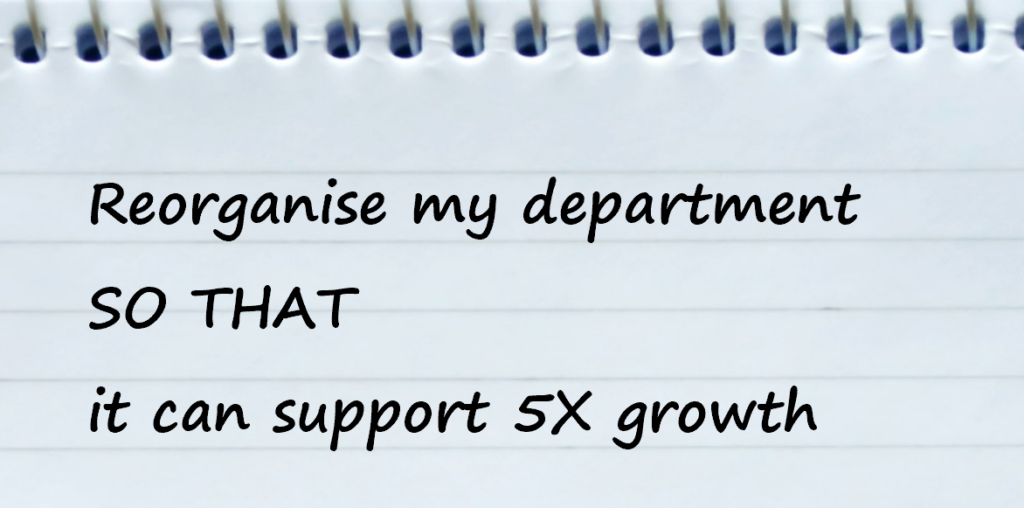
This practice builds agility into everyday ways of working. It empowers people to adapt whilst they are working, because they understand the outcome expected of that work and can update plans in the moment. This is something humans can do that machines can't. It is also why people were treated like machines in the industrial model - to stop them from thinking for themselves and doing anything unpredictable and upsetting the process. Stating outcomes allows people to recognise new information and adapt 'in the moment', essential in a dynamic and complex workplace where processes emerge collaboratively. [3]
2. Build a micro culture of respect and agency by active listening: Hold the space
Leaders have authority and coaches are servants, yet both use the same simple technique to be effective. They listen carefully to what people say, without interrupting. When they do speak, they build on what they have learned by listening. Often, what they learned was never spoken, but noticeable because it was avoided, implied, stirred passion, fear, or laughter.
Respecting people's beliefs and witnessing their experiences is an investment in time and self-discipline. You may wish the person would get to the point because your mind has an even better story to tell. It takes practice to recognise and learn to ignore this inner dialogue. As you do so, you will notice how respectful listening gives agency to others. Within the space you hold for them, you will notice how people are able to resolve their own complexities. They seem to suddenly realise why they are stuck and know what to do next. When this happens, ask what changed for them - they will tell you what they learned from their time with you.

Jobs are now so specialised, that managers can no longer dictate how to make workers more efficient. Tools and techniques change so rapidly that a manager who hasn't written production code for a couple of years is already out of date. Unlike their industrial-age counterparts, who could show workers exactly how to do every job in the factory, managers have to trust their teams to do their work. Instead, managers are needed to support the thinking, decision-making, and activities that go on.
3. Value existing skills and develop mastery: Especially your own
The most powerful way to improve culture is to model the behaviours you want in others, yourself. Leaders who 'walk the talk' of a learning culture prioritise their personal and professional development. They are excited to share their new-found information with people and to convert it into knowledge by trying (and failing) to put it into practice. It normalises learning.
Let's say you, as a manager are trying to develop your listening skills, whilst your teams are investigating better ways of prioritising work and automating their processes. Clearly, everyone's learning has a business benefit, but separately. Inviting teams to share what they have learned is a game-changing act of leadership. It changes established ways of work because you are making your learning transparent, making yourself vulnerable, and involving people on a human basis. Your interest is useful for team members too, giving them an opportunity to improve their communication skills.

Schedule time for both learning and sharing knowledge, and commit to trying out what you learn immediately. The main theories agree training and learning are different activities. Sending someone on a week-long training course may earn them a certificate, but until they have understood what happens when they follow and break the rules a few times, can they be considered responsible? Start with training, then create the space for learning.
4. Provide autonomy: learn to step back to let people get on with their work
Managers who haven't learned HOW to trust their teams hover like helicopters, micro-managing, and interfering with people's work. Also known as seagull management (seagulls swoop down, poop over everyone, then fly away). Often, people who do it haven't yet mastered delegation themselves. They can't trust anyone else because they can't describe the outcome they want. Instead, they need to control the way the work is done as if they were doing it themselves. Don't worry if you aren't a natural at delegation, because it's a skill that can readily be learned.
Autonomy is a motivating force and often produces exceptional results. In the eighties heyday of Japanese product innovation, researchers asked an executive the secret of their continued success.
"We open up our purse but keep our mouth closed"
The new, new product development game, Takeuchi & Nonaka, 1986
In fact, the ways of working described in this paper became the inspiration for Scrum, an agile approach to developing new software products. If you haven't already, do read it as part of your learning. It's really interesting and will understand how, and when, to use Scrum. [4]
5. Clarify what's most important now by recognising paradoxes: Manage tensions, not people
Finally, recognise that managers no longer need to manage people as they did in the industrial age.
Today, managers are needed to manage tensions within organisations so people can balance paradoxical demands. Such as maintaining Business As Usual (BAU) whilst also launching a new product, or supporting the needs of the local market as well as delivering the global strategy. Being good at opposing things like this is known as 'organizational ambidexterity'. [5]
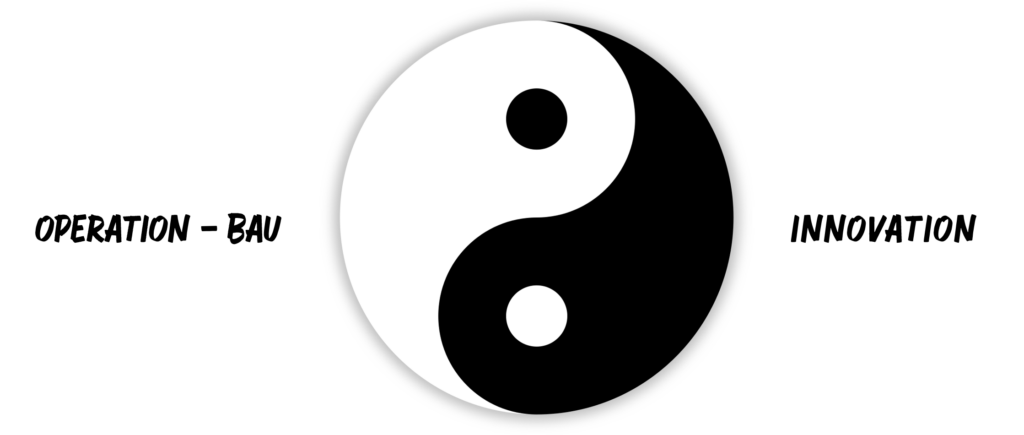
Tensions are normal and healthy, unless they create friction and cause internal conflict. Identifying and resolving tensions empowers people. It frees them up and allows them to find the appropriate balance for now, because they know all the things that are most important and can plan accordingly.
Counterintuitive but effective
The BBC Analysis report, 'Does work have to be miserable?' BBC, 2023 looked into the positive impact changing the ways of working in a hospital had on staff. Instead of optimising (staff) resources as if they were machines that needed to be managed to become efficient, managers trusted teams to self-organise around their, and their patients' needs. A feature of 'pull' ways of working is that productivity and quality go up. In the case of the hospital, they needed fewer expensive agency staff so costs actually went down.
Notes
1. The CERN case study comes from Margaret Heffernan's book, Uncharted. Haier is a founding member of the Business Ecosystem Alliance, whose conference is highly recommended. Amazon's leadership principles work hard for them 'every day'.
2. If you want to understand the difference between managing emergent-value activities and predictable-value activities, grab it for free by clicking Look Inside via this link. Or buy my little book, An Operating Model for Business Agility (it's cheaper through Amazon).
3. In Drive, Daniel Pink's 2009 book about motivation at work, Pink identified purpose, autonomy, and mastery as critical. Whereas as previous generations saw work itself as purpose, digital-age workers (millennials and Gen Y) placed highest value on doing work that was purposeful and aligned with their beliefs. In the same year, Simon Sinek published Start with Why: How great leaders inspire everyone to take action. See his TedX talk for his genius advice on how Starting with Why is the leadership way of working everyone should practice.
4. The paper is available from HBR, Takeuchi, H. and Nonaka, I. (1986) ‘The New New Product Development Game’, Harvard Business Review available at: https://hbr.org/1986/01/the-new-new-product-development-game. The back story to Scrum appeared on Jeff Sutherland's blog (2011) ‘Takeuchi and Nonaka: The Roots of Scrum’, Scrum Inc. Available at: https://www.scruminc.com/takeuchi-and-nonaka-roots-of-scrum/.
5. Ambidexterity is a theoretical concept in management studies that developed in popularity around the same time as Agile methods did in software practice. Where they intersect is the way that management shapes the context of work and which determines organisational performance. Ambidexterity is the literature basis of my doctoral thesis (and forthcoming book) which examines modern ways of managing.
Photo by Jungwoo Hong on Unsplash
Learn More
You can learn more about improving ways of working by:
